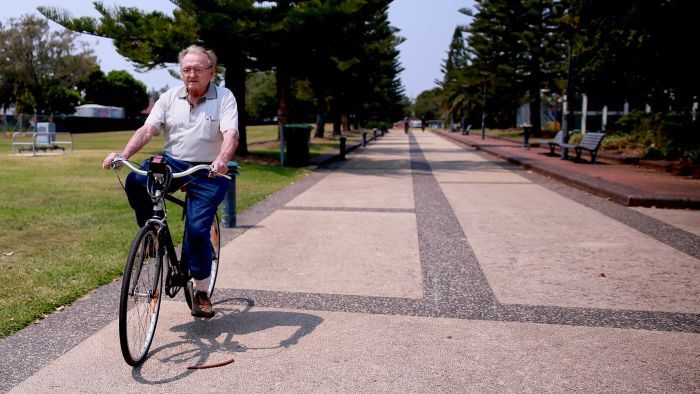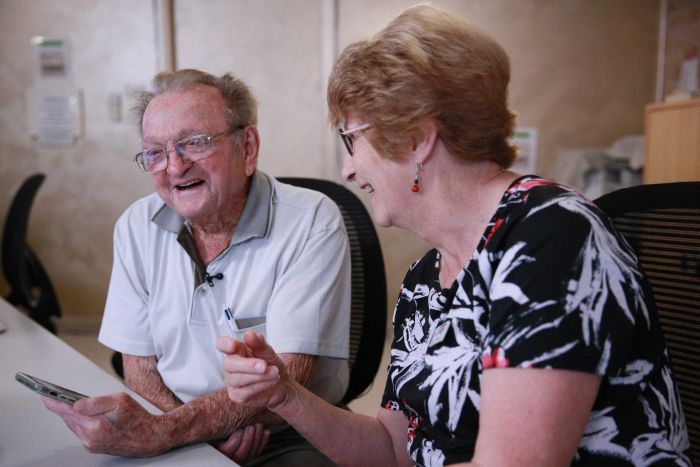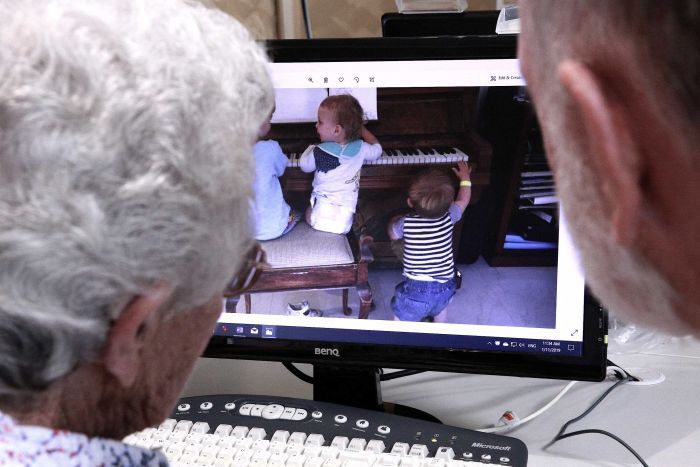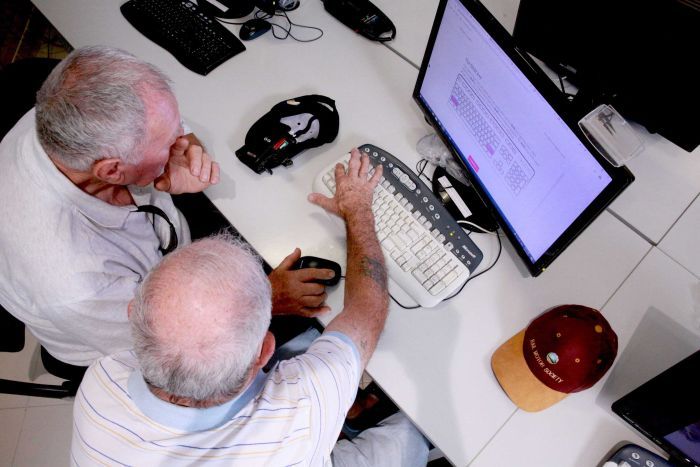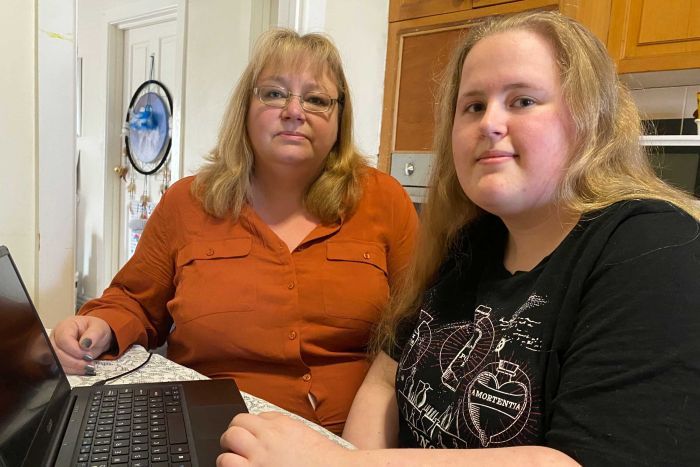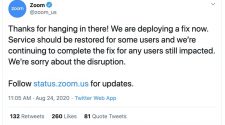Posted
Desmond White leads a very modern life, riding his bike around inner-city Newcastle, where he lives on his own in a fifth storey apartment overlooking the wharf.
Key points:
- The Australia Talks survey found 96 per cent of Australians use a smartphone
- 62 per cent of Australians spend between one and six hours a day on their devices, the survey found
- Most people think technology is making life better in Australia
But the 93-year-old was unimpressed when he recently became the owner of an iPhone.
“I had one of the old traditional phones, which was misbehaving. All callers — and I’ve got a lot of callers — would say ‘what’s up with your phone, what’s wrong with your phone?'” he said.
Optus offered Mr White a new phone and he agreed, but he was surprised to find it was an iPhone that arrived in the mail.
“I was expecting one like the old-fashioned stuff,” he said.
Suddenly, Mr White, who once presided over a successful tyre business, found himself unable to perform the previously simple task of making a phone call.
“Everybody promised — I’ve got grandkids and whatnot — to show me what to do with it,” he said.
With most of his family outside of the Newcastle area, Mr White turned to a computer club for older Novocastrians.
“I somehow managed to be able to make a call, and of course receive one … but it would be nice if I could do ever so much more, because I know it has so much to offer,” Mr White said.
Computer Pals for Seniors in Newcastle has been teaching older people how to use technology for more than two decades, and it was tutor Sandra Keen who taught Mr White the basics.
“Gradually, we’ve had people realising that they have to learn these things, they can’t do without them because that’s the way of the world,” she said.
“Some of them feel a little bit intimidated, feel a little bit upset because the world is changing so fast.
“It is scary, a lot of them are fearful.”
Photo:
Desmond White learns how to use an iPhone with instructor Sandra Keen. (ABC News: Elena De Bruijne)
Tutors at the club say where once people would come in curious to explore this new frontier, they are now coming in because they have no choice.
With Australia moving towards a cashless economy, many people have found themselves caught out, unable to use internet banking.
Ms Keen said the generational gap was particularly glaring when younger people tried to help out.
“They [older people] say, ‘oh I asked my son, or my daughter or my grandson or granddaughter … and they say, ‘oh you do this, this and this, press this button, do that, that’s how you do it’,” she said.
“The person sitting there who hasn’t understood the vast difference in the language and all the terminology, and hasn’t seen that before, is suddenly thrown and they’re thinking, ‘I have no idea what that person did’.
“They go to replicate it later and they have no idea.”
Photo:
Many senior Australians seek help using the internet so they can keep up with their grandchildren. (ABC News: Elena de Bruijne)
Has technology made life better?
It has been more than a decade since Australians were introduced to smartphones, and the ABC’s Australia Talks survey found 96 per cent of people in the country now own one.
Not surprisingly though, the data shows the older you get, the less likely you are to have one.
When asked whether technology was making life better, a majority (60 per cent) told Australia Talks it was, with most believing it had positive effects on education, jobs and the economy, but negative effects on teenagers and children.
For Mr White, who worked in coals mines around Mt Isa “in the day where every bucket of coal was made with a pick and shovel” the answer is obvious.
“Unhesitatingly, I would say it has [made life better], but it serves more to me an indication of what we’ve become,” he said.
“There are people now that get ever so much from it, people that never dreamed of this information.”
While Google has become so ubiquitous in modern society as to become an officially recognised verb, Mr White does not take for granted what an enormous change it represents.
“What’s the name for all the information on Earth that’s available?” he asked.
“Google! Google is what interests me most, because I envy so much in discussion, when someone will just touch the buttons while we’re speaking and give you the answer to what you’ve always wanted to know.”
Students ‘just trying to get everything done’
It is not just older Australians who find themselves having difficulty capitalising on the technology revolution.
Roy Morgan, Telstra and academics from Swinburne and RMIT universities have measured digital inclusion four times since 2014, with the most recent index released in September this year.
The report’s authors said digital inclusion — or exclusion — had “big implications for the future”, including access to education and developing skills needed not just to work, but to exist in a digitally enabled world.
They also said there was a “potential to fall behind”.
While older Australians are becoming more connected every year, they still lag behind the rest of the country.
But two groups are doing worse — low-income Australians and people whose only access to the internet is via their smartphones.
While Mr White said he was “missing out seriously” by not being across modern technology, the consequences for him were a lot less serious than for younger people whose families were struggling to make ends meet.
For Deborah Hollis, missing her monthly $70 internet payment is not an option, as her two teenagers Isabella and Isaac make their way through high school.
“There have been times when you get an unexpected bill come in and I’ve had to cut the food bill a little bit to make it work,” the Morwell mother said.
“They need it at home to do their homework, they need to be able to access the school portal, which is via the internet.”
School curriculums across the country include a heavy online component, but the Australian Education Union says there is no national approach when it comes to the technology available to students in schools.
The union said in the ACT, the department funded laptops for students, in South Australia students brought their own, and in Victoria the decision was made on a school-by-school basis.
Photo:
Deborah (left) and Isabella Hollis, from regional Victoria, say they will need to buy a new laptop next year. (ABC News: Jarrod Whittaker)
While it is common to hear concerns about teenagers spending too much time online, families like the Hollises are trying to overcome the opposite problem for the next generation to prosper.
“My children aren’t overly on the social side of things on the phone, I do monitor what they do for safety reasons … their internet usage is more for school and study,” Ms Hollis said.
“My daughter wants to be a vet; her studies are very important. My son wants to work in IT, so the actual work he wants to do is computer based.”
Isabella’s laptop suddenly stopped working as she was preparing for end-of-year exams, meaning the family will have to replace the machine for next year.
In the meantime, 16-year-old Isabella’s only option is to cram in all the study she can at school.
“I do what I can at school,” she said. “If I wanted to I could stay back after and use the computers there. I’m just trying to get everything I need done at school.”
With two years of school to go, and a mountain of computer-based homework ahead, she is hopeful her next laptop holds up long enough to see her through to university.
Topics:
computers-and-technology,
personal-computers,
personal-computers-laptops,
community-and-society,
information-and-communication,
internet-culture,
poverty,
access-to-education,
education,
melbourne-3000,
vic,
newcastle-2300,
morwell-3840,
nsw









